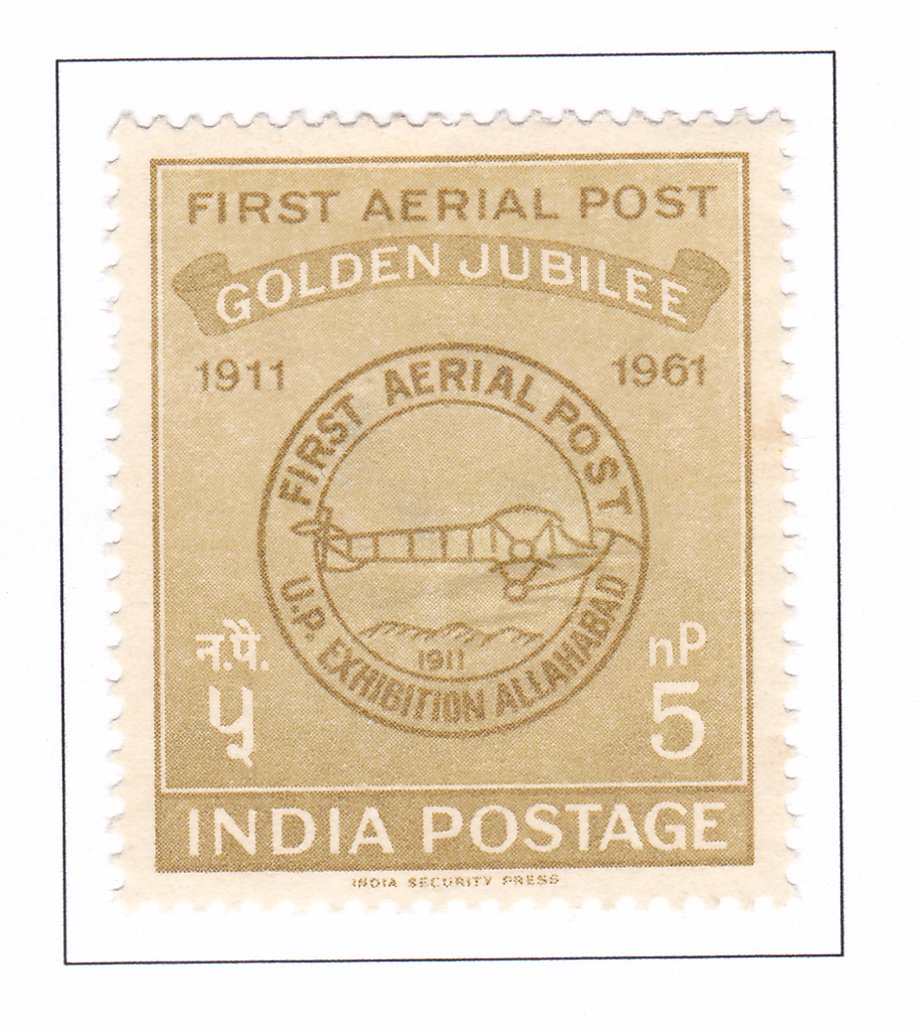First Aerial Postmark

Technical Data
| Stamp Set | 50th Anniversary of First Airmail Flight |
|---|---|
| Date of Issue | February 18, 1961 |
| Denomination | 5 nP |
| Quantity | 5,000,000 |
| Perforation | comb 14 |
| Printer | Security Printing Press, Nashik |
| Watermark | Asokan Capital Multiple [Up] |
| Colors | Olive bistre |
| Catalog Codes |
Michel IN 320 Michel IN 336 Michel IN 9 Michel IN 434 |
| Themes | Aircraft | Anniversaries and Jubilees | Aviation | Postal Services |
Fifty years ago, on February 18, 1911, a momentous event unfolded in Allahabad as a bi-plane soared into the skies from the Exhibition Grounds, carrying with it 6,500 letters and postcards—a historic milestone in the annals of postal services. This daring feat, piloted by M. Piquet, captured the imagination of thousands who witnessed the spectacle. While demonstration flights were not uncommon at such exhibitions, this flight stood out for its groundbreaking delivery of mail across the Jamuna to Naini, marking a significant advancement in postal communication.
Although India pioneered experimentation with mail carriage by aeroplane, progress towards establishing a regular air mail service within the country was slow. Initially, air mail development primarily served as a feeder to international services rather than addressing internal needs. The first regular air service between India and the United Kingdom commenced in 1929, followed by the inauguration of the first domestic route between Karachi and Delhi. However, progress remained gradual, with challenges hindering the expansion of domestic air services.
Tata Sons Ltd. played a pivotal role in advancing air mail traffic, establishing the first Indian airline and initiating a weekly air mail service between Karachi and Madras in 1932. Despite setbacks, such as the suspension of certain services, pioneers persisted in laying the groundwork for the development of domestic air services.
The introduction of the Empire Air Mail Scheme in 1938 marked a significant milestone, offering opportunities for further air mail service development. However, the outbreak of World War II led to the scheme’s suspension, disrupting progress in aviation.
Post-independence, India witnessed rapid expansion in the postal system, driven by the goal of extending modern amenities to a larger population. The introduction of the Night Air Mail Service in 1949, followed by the groundbreaking “All-Up” Mail Scheme, revolutionized mail transportation in the country. These initiatives, spearheaded by leaders like Shri Rafi Ahmed Kidwai, propelled India to the forefront of air mail innovation.
Over the years, advancements in aviation have ushered in significant changes in air mail services, dramatically reducing transit times and enhancing communication channels. As we celebrate these achievements, we pay homage to the heroes and pioneers who laid the foundation for the remarkable progress we witness today. Looking ahead, we anticipate a future of even faster and more efficient mail transmission, fostering enhanced global connectivity and communication.
